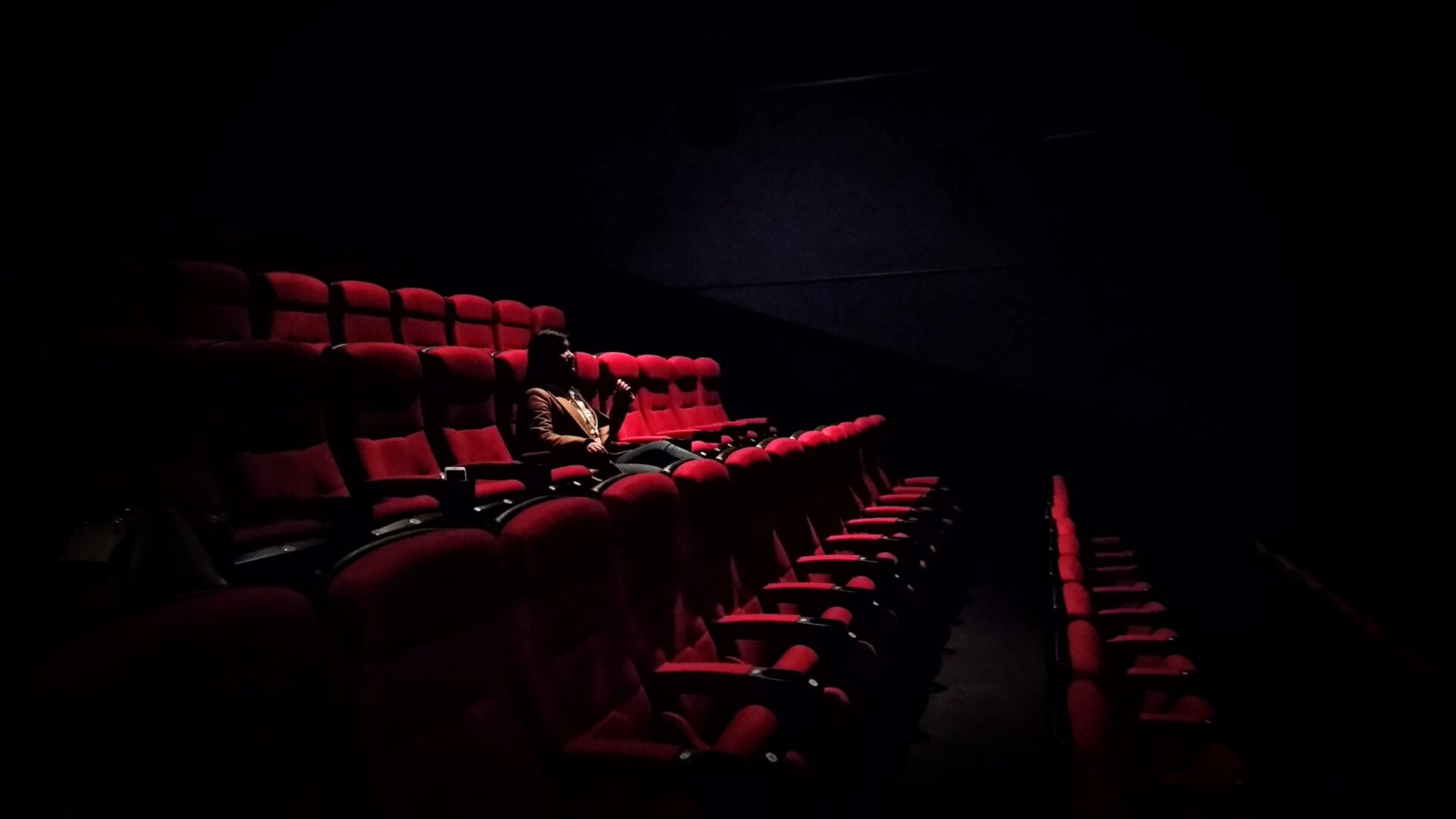This installment of Inkstick’s culture column, The Mixed-up Files of Inkstick Media (inspired by From The Mixed-up Files of Mrs. Basil E. Frankweiler), where we link pop culture with national security and foreign policy, reviews the biggest internet phenomena sweeping Hollywood: Barbenheimer.
Note: Light spoilers ahead.
I must admit, I did not take the cultural impact of Barbenheimer seriously until I was sitting in the movie theater waiting for “Oppenheimer” to begin. During the previews, a gaggle of bedazzled individuals wearing assorted shades of pink cosplaying Barbie dolls, about ten in all, shuffled into their seats. In the brief interlude between the previews and the movie, that sacred pause when the audience readied itself for a cinematic journey, one of the pink people whispered loudly in a faux-ditzy voice, “O-M-G guys, are we in the right theater?” Rather than a stern hush, the theater reacted with a collective chuckle, echoing into the first scenes of “Oppenheimer.”
It was nice to see a group of strangers — calloused by pandemic isolation, political dysfunction, imminent climate collapse, and all the other things that make living hard — softened by an inside joke made possible by the holy trinity of nukes, dolls, and social media. But it was also incredibly crass given that we were all about to watch a three-hour-long epic about the person who created the atom bomb: a very real weapon that destroyed, and continues to destroy, very real lives. This was the moment I realized why Barbenheimer is so captivating: the emotional discord perfectly encapsulates, for better or worse, a world under the influence of the internet.
Surprising Similarities
Unless you live off the grid, it has been impossible to avoid Barbenheimer, shorthand for this summer’s two blockbuster movies, “Barbie” (directed by the effervescent and sharp Greta Gerwig) and “Oppenheimer” (directed by the rigorous and moody Christopher Nolan), which shared an opening weekend in theaters last month. Since it was unveiled that these two films would debut simultaneously, people on the internet did what they do best: spawn memes that point to their diametrically opposed subjects, aesthetics, and overall vibes — many of which poke fun at obvious gendered tropes — until the two movies became an inseparable pair.
Watching “Oppenheimer” and “Barbie” as a set, no matter in which order, is like staring at an optical illusion: pay too much attention to the contrasts, and you will miss how they are alike.
Both films would have done well in their own right, but as an odd summer couple, they broke box office expectations. After almost a month in theaters, “Barbie” has reached over a billion dollars at the global box office, making history for women directors too, with Gerwig now becoming the highest-grossing female director in Hollywood. Oppenheimer, with over $600 million, is now the highest-grossing World War II movie of all time.
Since their release, the internet has been subjected to a torrential downpour of think-pieces about these films (pardon the addition of this one), debating which is better or which should be seen first in a double feature. A few days before the premiere, the Nuclear Threat Initiative recommended an Oppenheimer-first, Barbie-second viewing sequence. But what is most fascinating about the Barbenheimer phenomenon is the surprising similarities between the two films.
Both are artistic interpretations of uniquely American products: the Barbie doll and the atom bomb. Both feature controversial, and arguably misunderstood, protagonists. Both pull from comprehensive source material. “Barbie” mines the deep intellectual property vaults of Mattel, and “Oppenheimer” takes heavily from the voluminous pages of J. Robert Oppenheimer’s biography, “American Prometheus.” Both reveal an essense of patriarchy, “Oppenheimer” with the gaping absence of women who contributed to the Manhattan Project (i.e., the Calutron girls), and “Barbie” with Ken’s self-journey into realizing his worth beyond being Barbie’s accessory.
Most strikingly, both films exercise a certain degree of artistic license — both present a slightly romanticized portrait of serious issues. The Barbie monologue, brilliantly performed by the actress America Ferrera and lauded by critics as a tear-jerker, was indeed an emotional scene to watch, but the brand of feminism it invokes is not any more illuminating nor helpful than the 2017 pussyhat. After watching “Oppenheimer” (which, for the record, I believe to be a masterpiece despite its chosen historical framing), I found General Leslie Groves’s likability unsettling in part because the character is played by a handsome and charismatic Matt Damon. The real-life Groves intentionally kept the deadly effects of radiation secret.
Watching “Oppenheimer” and “Barbie” as a set, no matter in which order, is like staring at an optical illusion: pay too much attention to the contrasts, and you will miss how they are alike. Namely, both movies successfully shape grand, monolithic institutions — Barbieland and the Manhattan Project — into alluring and approachable worlds. Time will tell whether these achievements in cinematic world-building will also shape the real world in meaningful ways. Will “Barbie” elevate conversations around gender and feminism, or will its popularity only expand Mattel’s corporate purse? Will “Oppenheimer” rekindle concerns around nuclear weapons, or will it merely rack up Oscars as this year’s prestige film? Putting the meme aside, both films are beautiful works of art that are well-positioned to be impactful cultural artifacts of our time.
Of course, there are those who understandably find Barbenheimer offensive. In fact, many people in Japan take issue with Barbie-inspired GIFs flippantly referencing nuclear destruction. The Warner Bros. office in Japan issued an apology earlier this month after the official Barbie (distributed by Warner Bros.) social media account made a distasteful PR move by retweeting Barbenheimer fan art. But not all who participated in Barbenheimer are inherently awful. Rather, they all unwittingly highlight the universal naivete around the horror of nuclear weapons.
A Fitting Match Indeed
After decades of seeing nuclear weapons and radioactive mushroom clouds as Hollywood props in all kinds of movies — spy, dystopian sci-fi, superhero, romance — it is not surprising that people identified nuclear weapons closer to a toy than historical trauma. In a way, Barbenheimer is a candid slice of life processed through the internet, an apparatus that seamlessly layers the beautiful, the funny, the shameful, the terrifying. Every day, the internet subjects us to a chaotic mish-mash of information and imagery: a riverboat brawl; instructions on how to make goat curry; a fundraiser for Maui; a drone attack; a random but extremely good dancing video. Like it or not, this is how we take in the world, and in it, “Barbie” and “Oppenheimer” are quite a fitting match.
I tried to imagine what it could have been if both movies did not collide at the box office. Perhaps there is a strand of the multiverse out there where “Oppenheimer” got the full limelight, and perhaps movie-goers would have deeper respect for the subject, and engage in more serious conversations about it. But the people in this dialogue would be a certain kind of crowd, perhaps an older and more affluent demographic, the types who love to fall for Oscar-bait films. In that universe, the young, glittery pink people wouldn’t be sitting in the “Oppenheimer” theater. And they wouldn’t come out of that theater, looking a bit dazed, whispering to each other, “That was too long of a movie, but damn…I didn’t know.”
I don’t think this is the better ending.





















